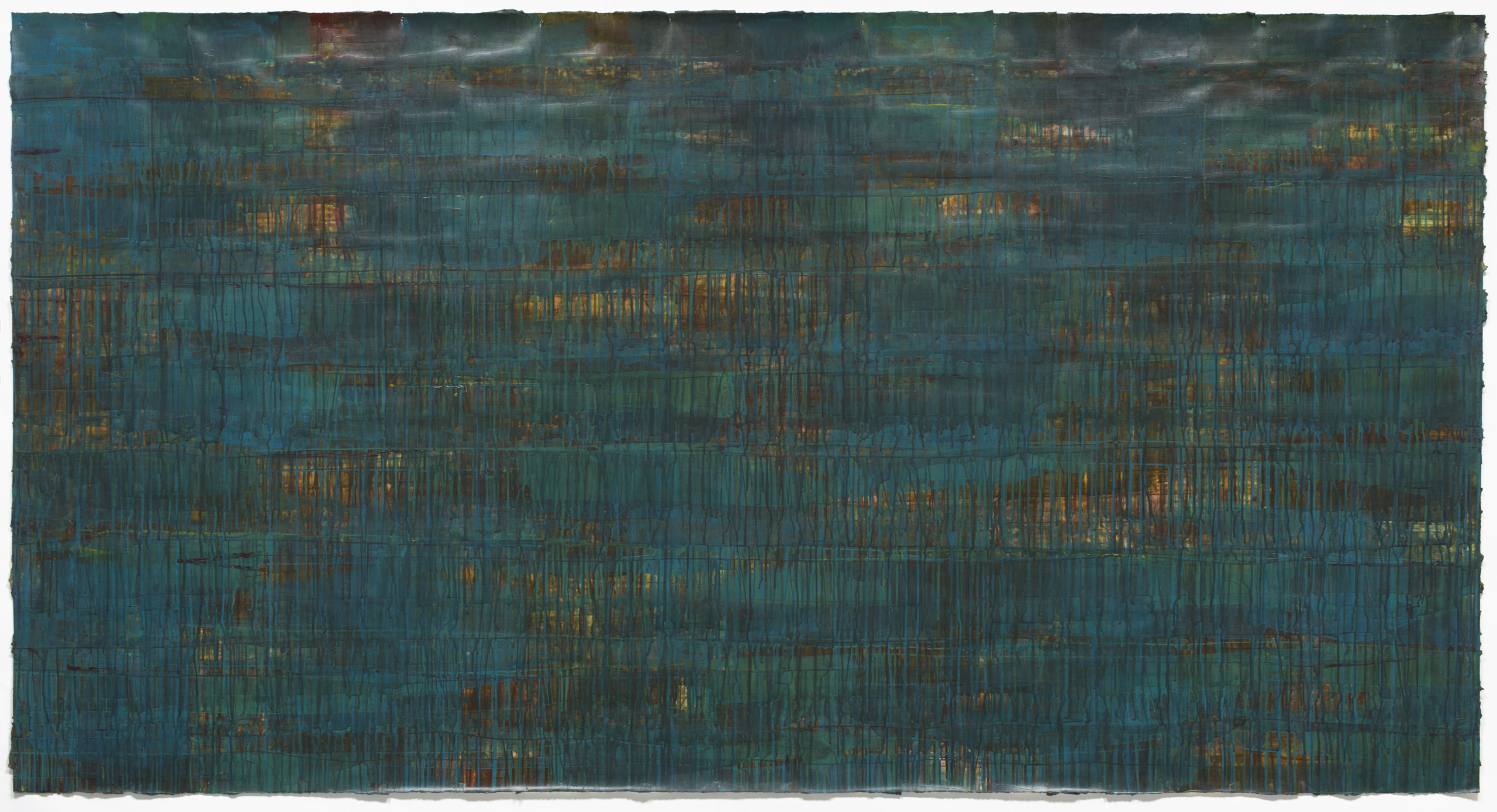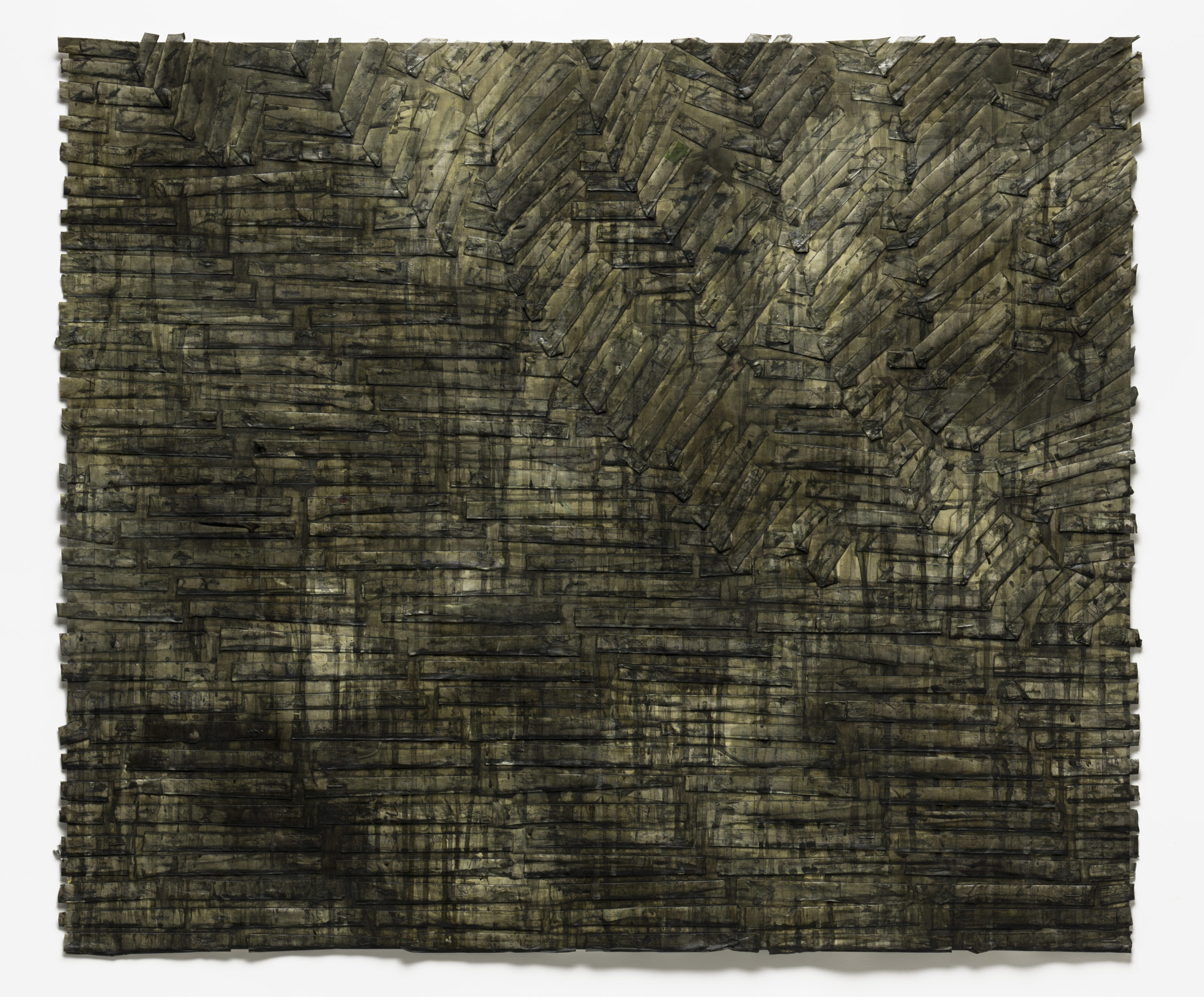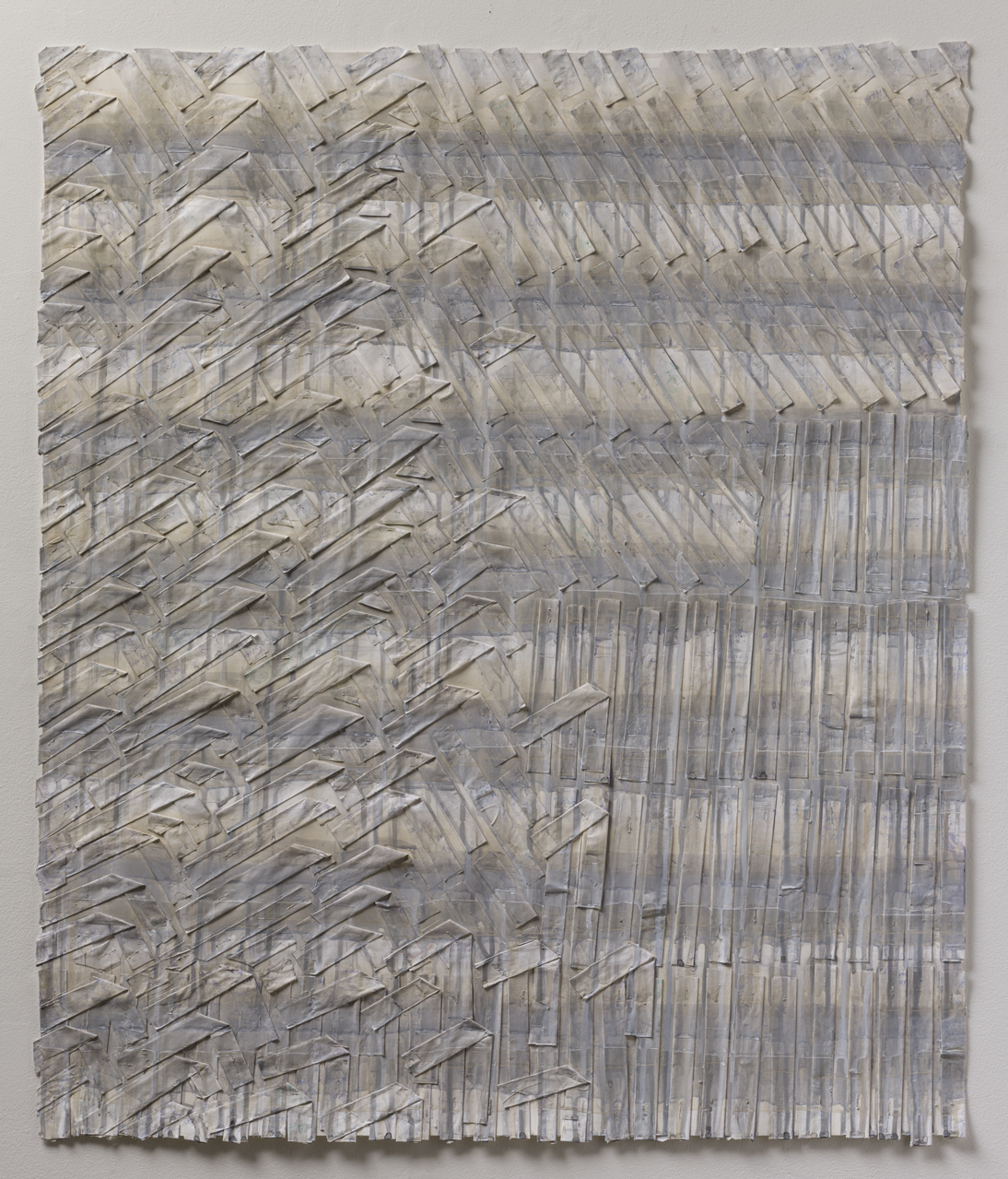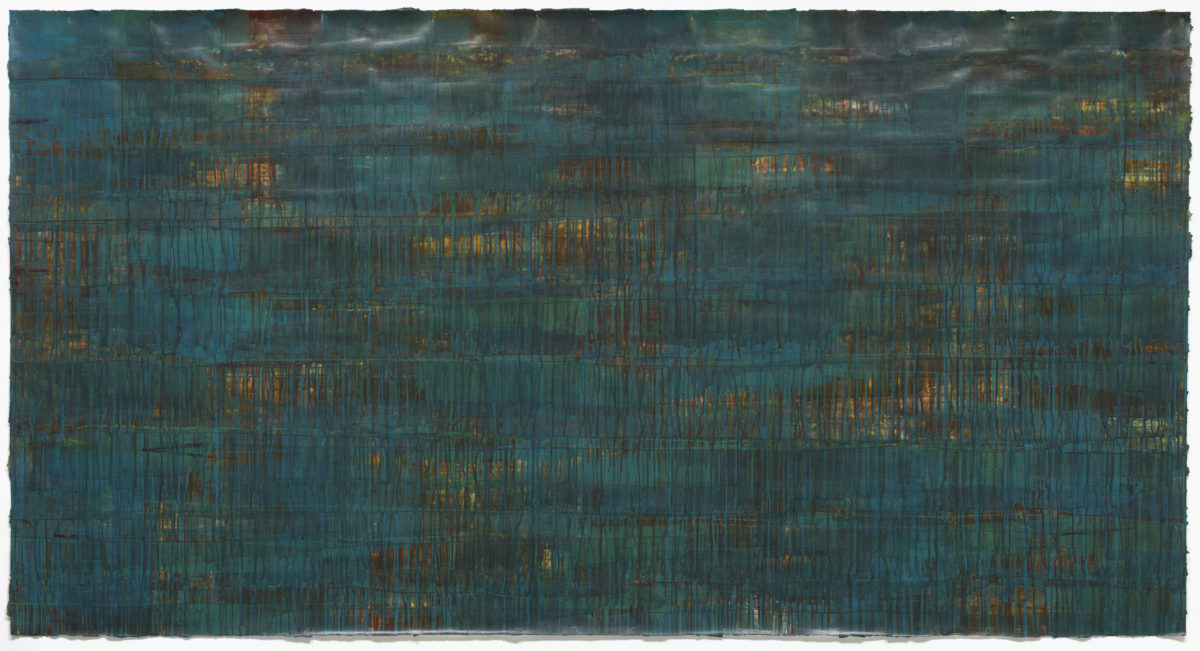
The Hanging Gardens 3: Sea/Red, 2013. 55 h x 105 w
Acrylic, ink, and collage on gessoed paper mounted on linen.
Collection of the artist. Photograph by Tim Thayer.
All works by Addie Langford courtesy of the artist and Hill Gallery, Birmingham.

Gray: Creosote/Green, 2013. 29 h x 34.5 w
Acrylic, ink, collage, and mixed media on gessoed paper mounted on linen.
Private collection. Photograph by Tim Thayer.
To use a formula of Nietzsche’s, it is never at the beginning that something new, a new art, is able to reveal its essence; what it was from the outset it can reveal only after a detour in its evolution.” -- Gilles Deleuze, The Time-Image
Thus does the French philosopher, in volume two of his discourse on the workings of film form, lay the groundwork for an edifice that is really an endless opening out. Floor upon floor, chapter after chapter, he patiently examines how it is that an image both comes into (and relates to the immensity of) existence, and this before our gaze.
That this becoming also inflects non-cinematic imagery is one surprise that the new paintings of Addie Langford have in store. The initial shock, a few short years ago, of her all-over works, their trust-in-nothing, was dramatic in its suggestiveness. To stand before them, to contemplate their chromatic darkness, was to find oneself held captive by an ephemeral something in the not-there. This quality was a powerful, wordless enigma which instantly transformed us into helpless inhabitants of an enclosure, a huis clos opening both inwardly and outwardly. And it made many viewers reach for the reassurance of such worn-out terms as “minimal” and “color-field.”
Yet, per Nietzsche, it has taken the present “detour in its evolution” for us to recognize the actuality of Langford’s art. What was once relentlessly static shows itself -- in the logic of its construction and the means of its application -- to be a form in movement, a surface generating a rigorous alignment that drifts, as if impelled by a force majeure.
So, flipping Deleuze’s terms, Langford constructs an endless opening which is also an edifice -- a space becoming a solid becoming a space -- whose vast, discomforting philosophical implications refuse to dissipate in the well-lit familiarity of a gallery. Others have peered into the abyss of unsettled form -- Mark Rothko, Robert Ryman, Anselm Kiefer -- but Langford responds to atmospheres and environments in and through very personal materials: accumulations of running acrylic and ink, layerings of recuperated paper and fragments of text, obsessive underpainting and overpainting taken to extremes. All of this in the service of a vision that refuses to let us look awry.
Detours -- in adventure or horror narratives, and famously in film noir -- are fraught with apprehension. But in Langford’s new work, they are the very trajectory of her insight. The slippage, the drift, becomes the inevitable pull of the image, the gravity of its journey from a here and now into an unknown, a gesture of purest (im)mortality.
Relentless washes of color in these recent paintings realize a potential that was always-already there, just not as expressionistically grid-like nor as exuberant, this last a perhaps unusual adjective for the existential awareness and insistent drama of Langford’s grounded yet unfettered time-images. They shift, breathe, and won’t let go.

Gray: Gray/Peach/Cream, 2014. 36 h x 32 w
Acrylic, ink, collage, and mixed media on gessoed paper mounted on linen.
Detroit Institute of Arts, Gift of the Lila and Gilbert Silverman Collection, T2020.538 Photograph by Tim Thayer.
